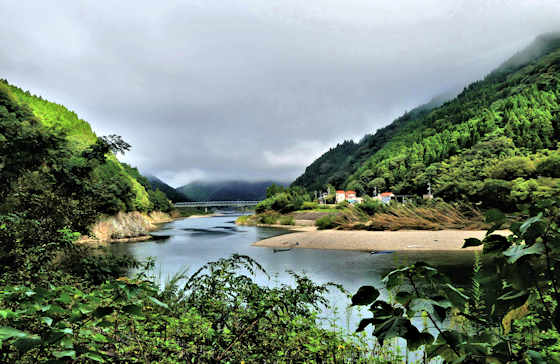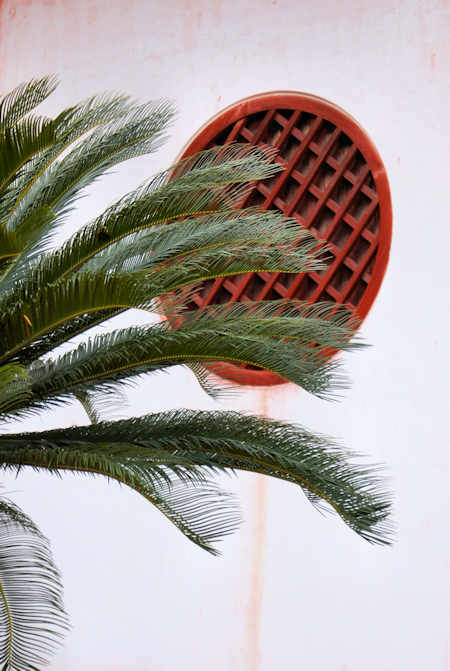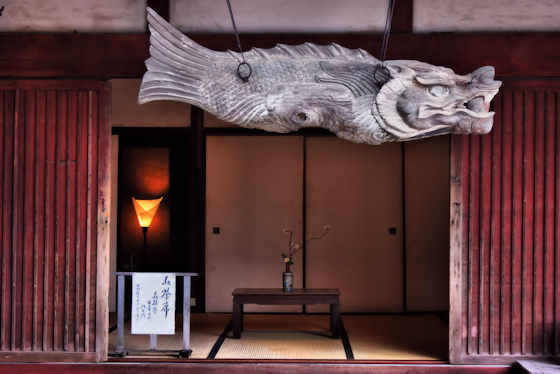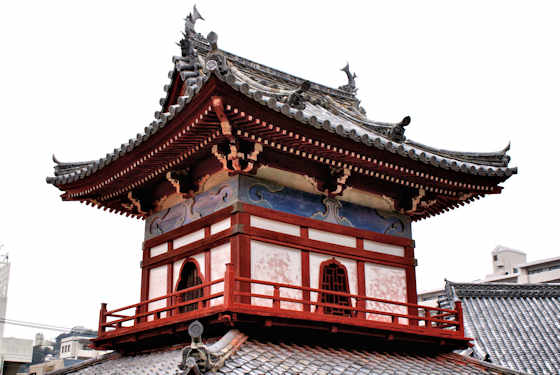Shofukuji is the 4th of the Chinese temples built in Nagasaki during the Edo Period. Like nearby Fukusaiji Temple, it is not located in Teramachi like
Sofukuji and
Kofukuji, but north of the river.
The Sanmon, the main gate, was built in 1703. Along with the other main structures of Shofukuji, it is an Important Cultural Property and is currently undergoing major renovation.
Shofukuji was founded in 1677 by a disciple of Ingen, the founder of the Obaku sect of Zen which had been founded in 1661. The other three Chinese temples became Obaku after 1661, but Shofukuji is the only one founded as Obaku.
The Tenmoden was built in 1705. The Japanese carpenters had started to slightly adapt and alter the Chinese style architecture.
When I visited in 2014 the place was deserted, somewhat run-down, and with no entry fee, so this contributed to an atmosphere. It is now undergoing major renovations so I suspect it will have an entry fee in the future.
The Tenmoden Hall contains a large statue of Hotei, one of the Seven Lucky Gods in Japan, and originally a Chinese monk named Budai. In the West, he is often referred to as the Laughing Buddha.
The main hall, Daiyuhoden, was built in 1697. Unlike the other Chinese temples in Nagasaki, much of the woodwork here was left unpainted.
The Bell Tower was built in 1716. Unusually the bell was not "donated" to the war effort in the 1940's like most temple bells.
Another difference between Shofukuji and the other Chinese temples in Nagasaki is that Shofukuji always had Japanese priests, whereas the other three started with Chinese priests.
The Kawarabei is an old wall constructed using old rooftiles and other decorations like Onigawara. Another thing to look out for is a monument to a young woman named Oharu who was expelled from Japan when all foreigners, excluding the Dutch, were expelled. Any Japanese families of Europeans expelled were also exiled. Also in 2020 a statue of Ryoma Sakamoto was erected to memorialize a meeting that took place here between the Tosa and Kishu clans.



































































